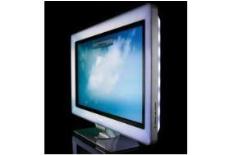What Hi-Fi? Verdict
This Philips packs in plenty of worthwhile technology substance to fine effect alongside the original styling
Pros
- +
Striking looks
- +
eye-catching Ambilight Spectra
- +
fine tuner
- +
sharp edges, excellent insight, vivid colours
Cons
- -
Expensive
- -
can’t quite get motion right
- -
black levels aren’t perfect
Why you can trust What Hi-Fi?
It's been a long time coming, but we've finally managed to get our hands – and more importantly our eyes – on Philips' Aurea television. If you saw a picture of the rather expensive Aurea around the time it was announced, it probably would have stuck in your mind.
The one-off (for now) 42in television takes Philips' Ambilight technology to the next level.
This latest incarnation, Ambilight Spectra, has a number of key differences. Instead of the light effect being projected solely from behind the screen back on to your wall, there's now an ‘active frame' directly around the picture, which itself glows in line with the colours on the screen.
This means the light effects are exuded at a much wider angle than seen on previous Ambilight screens. Also, this version of Ambilight now uses LED technology.
There are a total of 126 LED lights hidden inside the frame, which Philips claims enable a wider, brighter colour range and, thanks to the increased angle of light projection, make for an even more immersive experience.
Lest we forget, there's also a speaker system tucked inside that fancy frame, with two invisible arrays of some 12 micro speakers. These are complemented by two sub/midrange speakers located at the back of the set.
In awe of the Aurea
If that wasn't enough technology for you, don't forget that the Aurea does of course still offer all your old favourites – and then some. It's a 1920 x 1080 Full HD resolution panel, offering three HDMI inputs, digital and analogue tuners, the company's latest Perfect Pixel HD engine and 100Hz Clear LCD.
There's also Philips' own HD Natural Motion, which is aimed at smoothing out unwanted juddering in film and especially 1080p/24fps video. One thing's for certain, this vast screen in action looks like no other.
Whether watching television or setting it to Lounge Light Mode and simply enjoying the LEDs in action, the Aurea's unique appearance is utterly captivating. In fact, it undoubtedly takes some getting used to before you stop gazing at the surround itself.
Watching the splendid Blu-ray version of Training Day, the natural colour palette is handled impressively, while the level of insight on display is excellent.
Tweak to your taste
The TV's settings allow for plenty of tweaking; after much deliberation we settled for the Ambilight on ‘4' and ‘relaxed', which added to our viewing enjoyment without being distracting.
Fast motion is relatively steady, if not faultless. Switch the HD Natural Motion on and it's smooth, though it does introduce some shimmering around the edges of objects, even if only on the minimum setting, and still looks a little unnatural at times.
Dealt some dark black levels, the Philips copes admirably, but it can't quite deliver the insight of the very best. Switch to a DVD and again the overall image has a great deal going for it, namely strikingly good detail, sharp edges and a fine colour balance.
Solid tuner, solid sound
The digital tuner is solid, being largely free of noise, very sharp, and capable of impressive levels of contrast and vivid colours. Should you be using the television in isolation, you'll be glad to hear the sound quality from the invisible speakers (again, once tweaked) is decent enough, too.
Sadly, we can't help thinking that this television is a little expensive at the widely quoted £3000. Yes, it's like no other TV on the market, and if you're taken by the Ambilight Spectra, which we would absolutely understand, then it will make you very happy.
However, the odd question mark hangs over the motion and black levels, meaning that, while this Philips set is undoubtedly impressive, revolutionary and unique, it's not quite a five-star product.
The latest hi-fi, home cinema and tech news, reviews, buying advice and deals, direct to your inbox.
What Hi-Fi?, founded in 1976, is the world's leading independent guide to buying and owning hi-fi and home entertainment products. Our comprehensive tests help you buy the very best for your money, with our advice sections giving you step-by-step information on how to get even more from your music and movies. Everything is tested by our dedicated team of in-house reviewers in our custom-built test rooms in London, Reading and Bath. Our coveted five-star rating and Awards are recognised all over the world as the ultimate seal of approval, so you can buy with absolute confidence.


